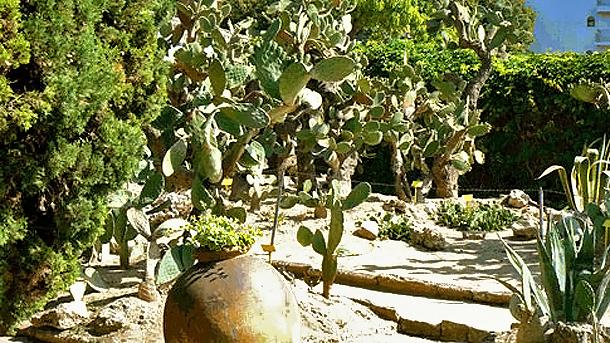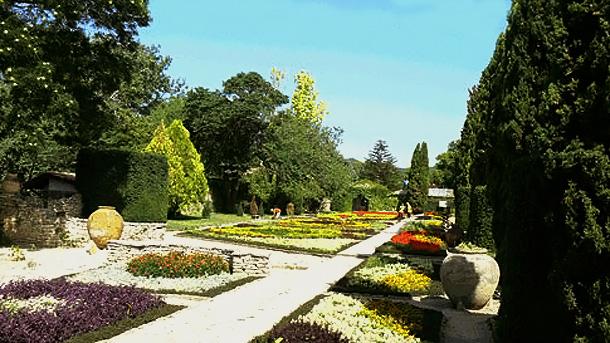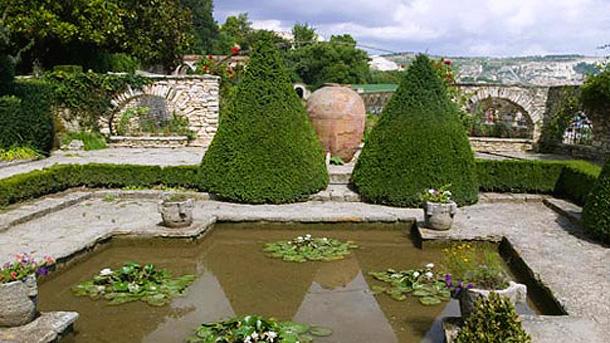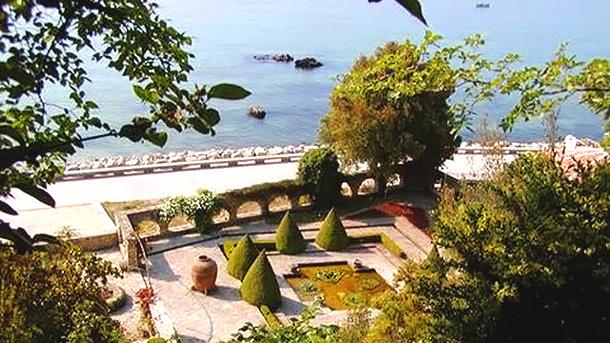Olden stone thrones, ponds where water lilies float, and rare tree species and flowers bloom close to the Black Sea coast. Where can one find those? In Bulgaria, of course.
Only a few kilometers to the north of the big coastal city of Varna lies the town of Balchik. It is most famous for being the summer residence of Maria, Queen of Romania, who resided there in the years of the Romanian occupation of Southern Dobrudzha (1919 – 1940). Later the Palace was given to the Culture Ministry as a venue for artistic recreation, while the adjacent park was given to Sofia University for development of unique plant species.

The Botanic Garden in Balchik occupies an area of nearly 6.5 ha and has a total of over 2 500 plant species. There are 33 palm tree species alone, some of them older than 50 years. One of the major attractions is the collection of gigantic cacti that grow in the open air from April to October each year. It is the second biggest in Europe, after the one in Monaco. There are exotic trees such as the Japanese raisin tree (Hovenia dulcis), the Red Juniper (Juniperus virginiana), and the Dawn Redwood (Metasequoia). The latter species was thought extinct, until Nikolay Stoyanov, a Bulgarian academician, found it still living during an expedition in China. One of the most beautiful plants in the Botanic Garden are the water lilies, the magnolias, the orchids and the bromelias, as well as the beautifully arranged collection of annuals at the very entrance. The University Botanic Garden in Balchik is a rescue centre under the Convention on International Trade in Endangered Species of Wild Fuana and Flora (CITES) and a regular member of Botanic Gardens Conservation International (BGCI).
“We provided disabled people with access to the Botanic Garden,” Krasimir Kossev, PhD, director of the Botanic Garden explains. “We made it accessible to both people with difficulties in walking and with impaired eyesight. In fact, this is the only botanic garden in Bulgaria that has special alleys for people with motion disabilities. What is more the sightless people can get acquainted with the specifics of the plant species through the plaques engraved in the Braille script. We built a new greenhouse for the cacti to avoid their reseeding every winter. The cacti exposition has now become available all year round. Several years ago we started arranging a spring display of bulbous plants. We have nearly 100 tulip varieties blossoming from March till April.”

The tulips, or the Emperors of Spring as they are called in the Botanic Garden, will delight visitors till mid-June. There are more than 15 000 of them and the garden by the sea is literally glistening with the colours of spring and enjoys great popularity among the foreign and the Bulgarian visitors alike. The principal role in the “Tulips’ Show” plays the Aladdin variety – flowers of a deep red colour tinged in white at the sides, and the Parrots, a variety that resembles a parrot’s beak before the petals open up.
The lovers of tulips may enjoy also the sight of the black “Queen of the Night” variety. The Urumov tulip, named after Bulgarian botanist Ivan Urumov, is an endemite protected under the Biodiveristy Act and included in Bulgaria’s Red Book of Endangered Species. There are also dwarf tulips.

The Botanic Garden carries out international exchange with more than 350 counterparts all over the world. Recently they have set up contacts with gardens in Argentina, Brazil, the United States, Japan and some other countries. The botanic gardens abroad have an interest in some of our species for scientific purposes, and because they would like to have seeds from our plants that have managed to adapt well to the environment, explained biologist Mariana Mincheva.
University and high school students come to work in the Botanic Garden very often.
“We receive students all year round,” says Krassimir Kossev. “A few years ago we won a joint project with our colleagues from the Royal Botanic Gardens in London and Italian counterparts. We designed 40 modules to work with students. We published a textbook with many very beautiful photographs of our plants. Our objective is to lay the foundations of a fruitful cooperation between the high schools and the botanic gardens and enhance thus the interest of the Bulgarian students in the flora forming this way an awareness about the environment. And we aim to achieve all this by means of up-to-date, discreet learning among the plant species in the garden. “
English version by Radostin Zhelev

All photos are provided by the author.
The 2024 Christmas and New Year holidays will be more than 10 days long, from December 20 to January 2, which will encourage both family and business travel, Prof Dr Rumen Draganov, director of the Institute for Analysis and Forecasting in Tourism, told..
The Odeon of Philippopolis is a starting point of new tourist routes in Plovdiv, Minister of Tourism Evtim Miloshev said upon visiting the restored site in the city center. The ancient landmark is part of the forum complex and..
This winter season, a 5% growth in the number of tourists is expected compared to the previous year, caretaker Minister of Tourism Evtim Miloshev said at the opening of the ski season in the Pamporovo resort. For the winter season,..

+359 2 9336 661
